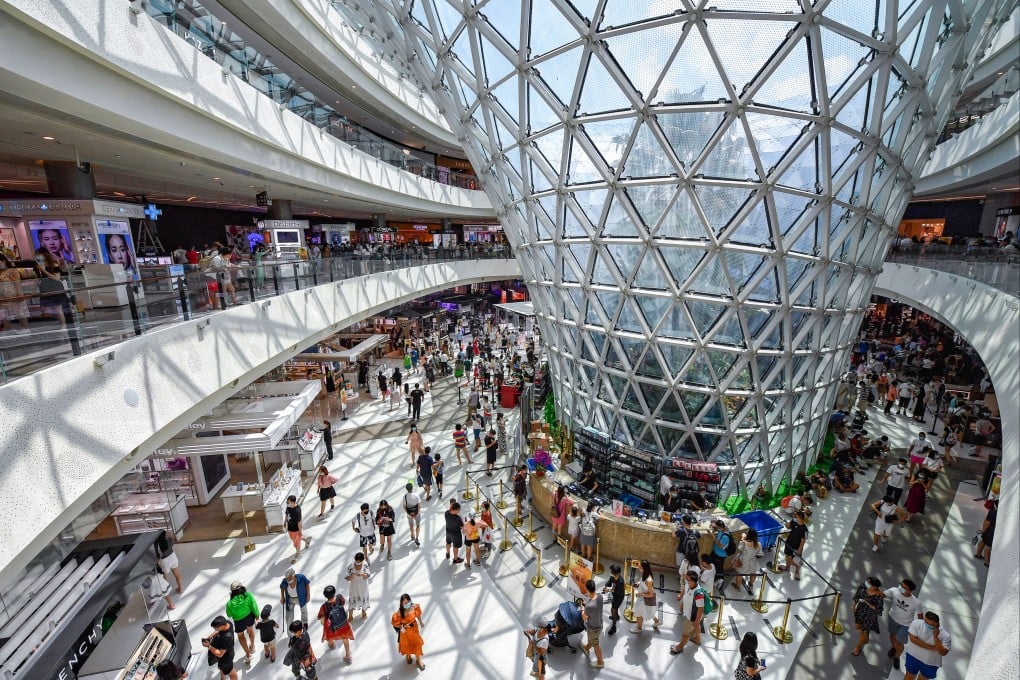Advertisement
China’s Hainan sees duty-free sales boom as shoppers look for ‘convenient’ alternative to Hong Kong
- The number of duty-free shoppers visiting the island increased by 73 per cent year on year in 2021, while sales grew by 83 per cent
- Analyst says there is a correlation between Hainan’s booming duty-free sector and Hong Kong’s strict coronavirus border controls
Reading Time:2 minutes
Why you can trust SCMP
4

Duty-free sales in China’s island province of Hainan surged to 50.49 billion yuan (US$7.9 billion) in 2021, growing 83 per cent from a year earlier, as the coronavirus pandemic continues to limit travel abroad and Hong Kong’s stringent quarantine controls make it difficult for mainlanders to visit the city.
Hainan’s commerce department said the number of duty-free shoppers to the island increased by 73 per cent year on year, and the volume of duty-free purchases rose by 71 per cent over the same period.
The island’s 10 duty-free stores – which also sell non-duty free items – booked sales of 60.173 billion yuan last year, up 84 per cent from 2020.
Advertisement
China announced in June last year it would turn the 35,000 sq km island into the world’s largest free-trade port by offering tax incentives and relaxing visa requirements for tourists and business travellers.
It also increased the duty-free quota from 30,000 yuan to 100,000 yuan per person each year and expanded the tax-free goods categories to include electronic products and wine.
Advertisement
Advertisement
Select Voice
Choose your listening speed
Get through articles 2x faster
1.25x
250 WPM
Slow
Average
Fast
1.25x